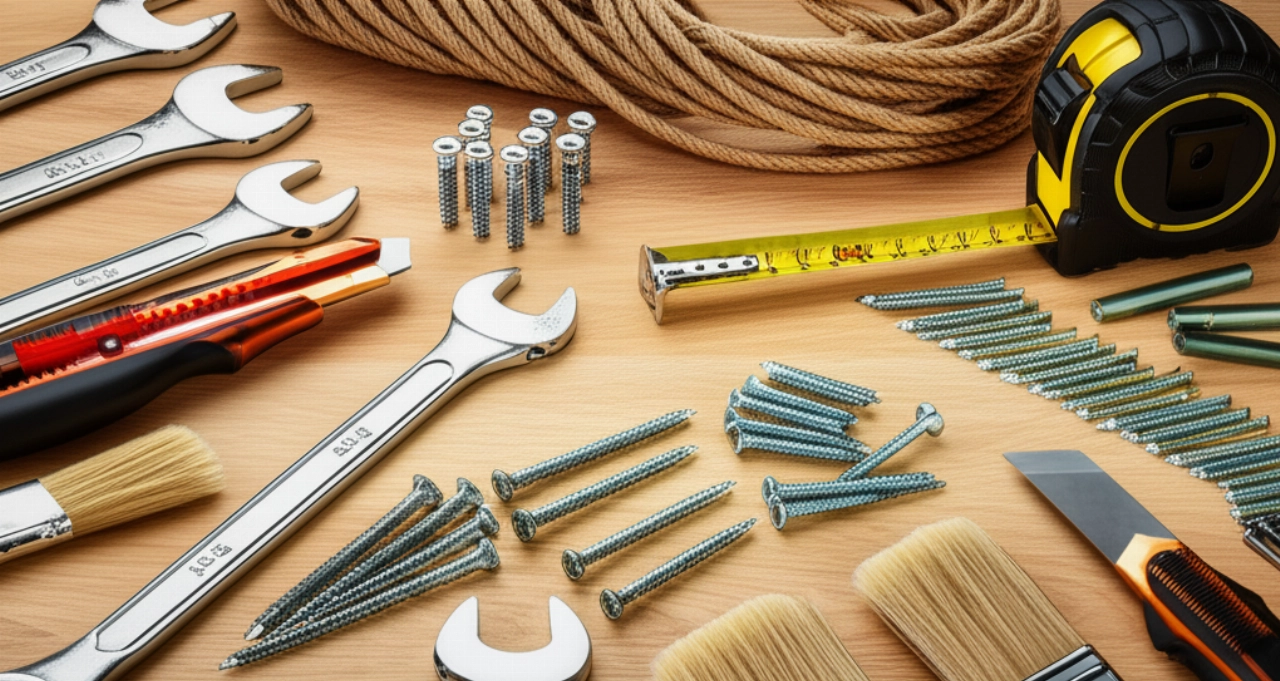Are you a leader in the DIY hardware sector, grappling with an e-commerce platform that feels more like a bottleneck than a growth engine? Perhaps your current system struggles with the sheer complexity of your product catalog, from intricate specifications to diverse pricing tiers for B2B and B2C customers. Or maybe the operational nightmare of disconnected ERP, PIM, and CRM systems is stifling your team's productivity and your ability to scale.
The truth is, many businesses in the diy hardware ecommerce space fall into the "one-size-fits-all" trap, adopting generic platforms that simply cannot handle the unique demands of their industry. This leads to a scalability ceiling, integration hell, and the constant anxiety of a performance bottleneck during peak seasons.
At Commerce-K.com, we understand that for DIY hardware enterprises, an e-commerce platform isn't just a website. It's the central nervous system of your business. This article is your strategic blueprint, designed to help CTOs, E-commerce VPs, and CEOs navigate the complexities of building a robust, efficient, and customer-centric digital commerce ecosystem that truly optimizes your operational efficiency and elevates the customer experience for your complex product catalogs.

Beyond the Digital Shelf: Engineering Your DIY Hardware Ecommerce Ecosystem
For businesses dealing with thousands of SKUs, intricate product variations, and a mix of B2B and B2C customer segments, your e-commerce platform must be more than a simple storefront. It needs to be a powerful, integrated operating system that streamlines every aspect of your digital presence.
- Mastering Product Data: From lumber dimensions to intricate tool specifications, managing accurate and rich product information is paramount. A robust diy hardware ecommerce solution integrates seamlessly with your Product Information Management (PIM) system, ensuring consistency and accuracy across all channels.
- Streamlined Operations: Imagine a world where your inventory, order processing, and customer data flow effortlessly between your e-commerce platform, Enterprise Resource Planning (ERP), and Customer Relationship Management (CRM) systems. This level of integration is not a luxury; it's a necessity for reducing manual errors, accelerating fulfillment, and improving overall operational efficiency.
- Enhanced Customer Experience: Whether it's a DIY enthusiast looking for a specific bolt or a professional contractor ordering bulk materials, their online experience must be intuitive and efficient. This includes advanced search, filtering, product configurators, and personalized recommendations, all powered by a deep understanding of your customer's needs.
We engineer these systems to become the backbone of your digital transformation, turning complexity into competitive advantage.

The 'Off-the-Shelf' Trap: Why Generic Platforms Fail DIY Hardware Ecommerce
Many enterprises, particularly in the diy hardware ecommerce sector, initially opt for seemingly simple, off-the-shelf SaaS solutions. While appealing for their perceived ease of use and lower upfront costs, these platforms often become restrictive cages, stifling growth and innovation.
Here’s why a generic approach often falls short for complex DIY hardware businesses:
- Inflexible Pricing Models: Your business likely requires sophisticated pricing rules – tiered pricing for bulk orders, custom quotes for B2B clients, promotional bundles, or even dynamic pricing based on inventory levels. Standard SaaS platforms rarely offer this level of granularity without extensive, costly workarounds.
- Limited Product Configurators: Selling custom-cut materials, modular shelving, or configurable toolkits? A basic platform won't support the complex logic required for customers to build and visualize their custom orders, leading to frustration and lost sales.
- Poor Integration Capabilities: The Achilles' heel of many generic platforms is their inability to deeply integrate with your existing critical business systems (ERP, WMS, CRM). This leads to data silos, manual data entry, and an operational nightmare that significantly increases your Total Cost of Ownership (TCO).
- Scalability Ceiling: As your business grows, so does your traffic, product catalog, and transaction volume. An "off-the-shelf" solution might buckle under this pressure, leading to slow performance, crashes, and a direct impact on your revenue.
Avoiding this trap means recognizing that your unique business processes demand a tailored, robust architecture, not a compromise.

The Strategic Pillars of a High-Performance DIY Hardware Ecommerce Platform
Building a future-proof diy hardware ecommerce platform requires a strategic approach, focusing on key pillars that ensure long-term success and profitability. These are the non-negotiables for any enterprise looking to dominate its market:
- Uncompromising Scalability: Your platform must be able to handle exponential growth in traffic, product SKUs, and transaction volume without performance degradation. This means choosing an architecture designed for enterprise-level demands.
- Seamless Integration Ecosystem: True efficiency comes from a unified data flow. Your e-commerce platform must be the central hub, seamlessly connecting with your ERP for inventory and order management, PIM for rich product data, CRM for customer insights, and WMS for fulfillment.
- Robust Performance & Speed: In the digital age, speed equals conversion. A slow site kills sales and damages SEO. Your platform must be optimized for lightning-fast load times, even with complex product pages and high traffic.
- Customization & Flexibility: Your unique business rules, complex pricing structures, and specific B2B workflows cannot be shoehorned into a rigid system. The platform must be flexible enough to adapt to your needs, not the other way around.
- Security & Compliance: Protecting customer data and ensuring transactional security is paramount. Your platform must adhere to the highest industry standards for data privacy and cybersecurity.
These pillars form the foundation of a digital commerce engine that not only sells products but also drives operational excellence and competitive advantage.
Case Study: Transforming a €30M Hardware Distributor's Digital Commerce
A leading European hardware distributor, generating €30M annually, faced significant challenges with their aging, monolithic e-commerce platform. It was a classic case of integration hell, with manual data transfers between their ERP, a rudimentary PIM, and their online store. This led to inaccurate inventory, delayed order processing, and a frustrating customer experience, particularly for their B2B clients who needed custom pricing and bulk ordering capabilities.
Commerce-K.com partnered with them to engineer a new digital commerce ecosystem. We implemented a composable architecture, integrating a powerful B2B-ready e-commerce platform with their existing SAP ERP, a new enterprise-grade PIM, and a modern CRM. We developed custom modules for complex pricing rules and a streamlined B2B portal with account-specific catalogs and self-service features.
The result? A 40% reduction in manual order processing time, a 25% increase in online B2B order volume within the first year, and a significant boost in customer satisfaction due to accurate inventory and faster fulfillment. Their new platform is now a scalable asset, ready for future growth and new market opportunities, demonstrating the power of strategic ecommerce development.
Frequently Asked Questions about diy hardware ecommerce
- What is the typical ROI for investing in a custom DIY hardware ecommerce platform?
- ROI varies significantly based on specific business needs and the scope of the project. However, our clients typically see returns through increased operational efficiency (reduced manual work), higher conversion rates, expanded market reach (B2B and B2C), and improved customer lifetime value. We focus on measurable outcomes like reduced TCO and increased revenue per customer.
- How complex is integrating my existing ERP, PIM, and WMS systems?
- Integration complexity depends on the age and flexibility of your current systems. We specialize in complex integrations, using API-first approaches to create seamless data flows. Our process includes thorough discovery to map your existing architecture and design a robust, scalable integration strategy that minimizes disruption.
- What is the typical timeline for a DIY hardware ecommerce platform migration or new build?
- Timelines range from 6 to 18 months, depending on the scope, complexity of integrations, and customization requirements. Our agile methodology ensures transparency and allows for iterative development, delivering value at each stage. We prioritize minimizing downtime and ensuring SEO continuity during migrations.
- Can your solutions handle both B2B and B2C sales for DIY hardware?
- Absolutely. We design platforms that seamlessly cater to both B2B and B2C customer segments, often within the same unified system. This includes features like custom pricing, credit accounts, bulk ordering, and self-service portals for B2B, alongside intuitive user experiences, personalized recommendations, and efficient checkout for B2C.
You've navigated the complexities of the diy hardware ecommerce landscape, from the pitfalls of generic platforms to the strategic pillars of a high-performance digital ecosystem. The insights shared here are not just theoretical; they are forged from years of engineering enterprise-grade commerce solutions that deliver tangible, measurable results.
Perhaps you're thinking, "This sounds like a significant investment," or "Do we truly have the internal resources for such a transformation?" These are valid concerns. But consider the hidden costs of inaction: the ongoing operational inefficiencies, the lost sales due to poor performance, and the competitive disadvantage of a stagnant digital presence.
Stop navigating technical debt and missed opportunities. Your DIY hardware business deserves a clear digital commerce roadmap that delivers measurable results and future-proofs your operations. The first step isn't a quote; it's a no-obligation Scoping & Strategy Session with our senior architects. We'll help you map your potential, de-risk your investment, and identify the opportunities you're currently missing. Click here, tell us about your project, and start building your future-proof commerce engine today.
Now that you understand the strategic importance of a robust platform, discover how we execute a seamless ecommerce migration service or explore the benefits of headless commerce for ultimate flexibility.





